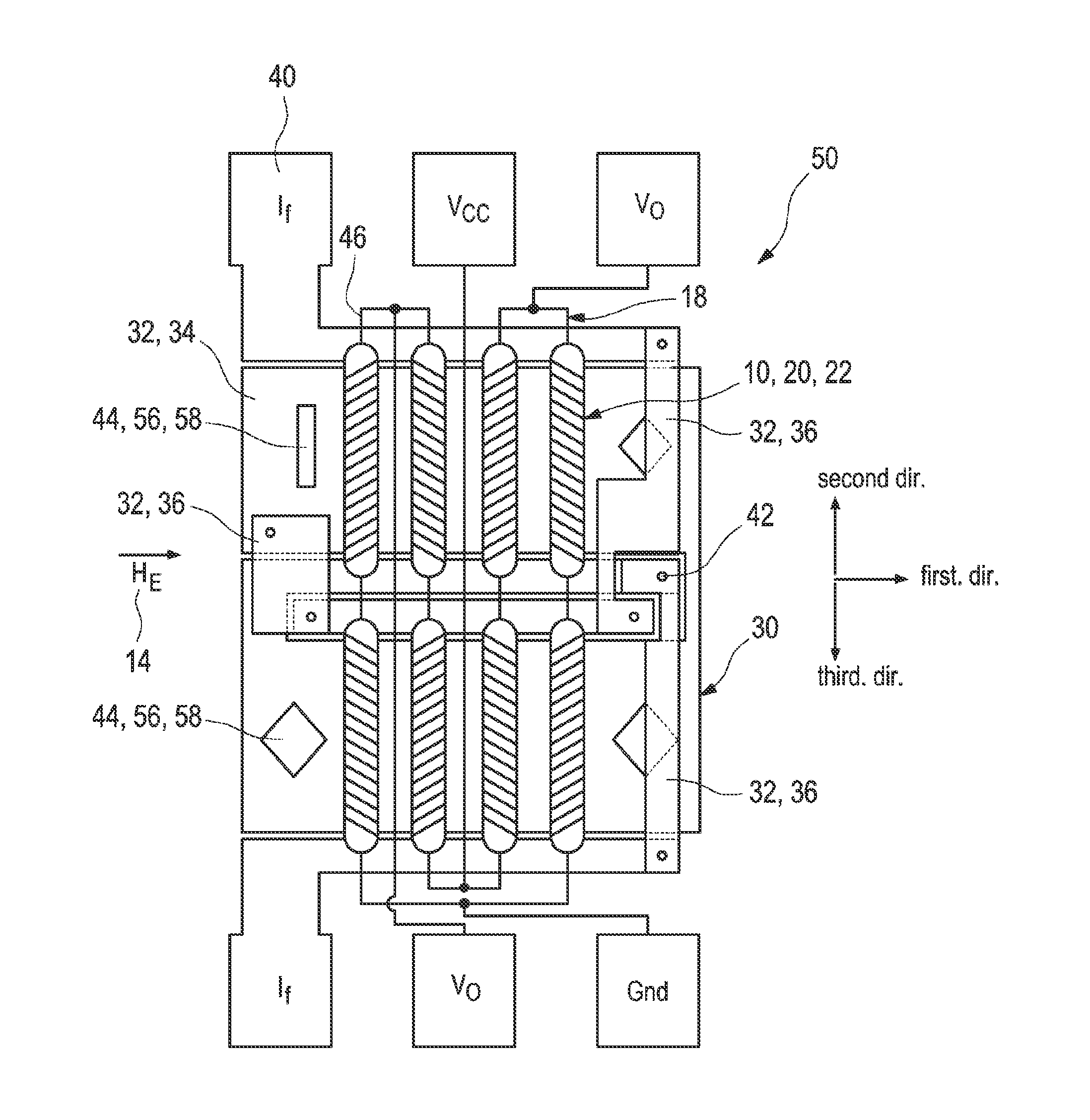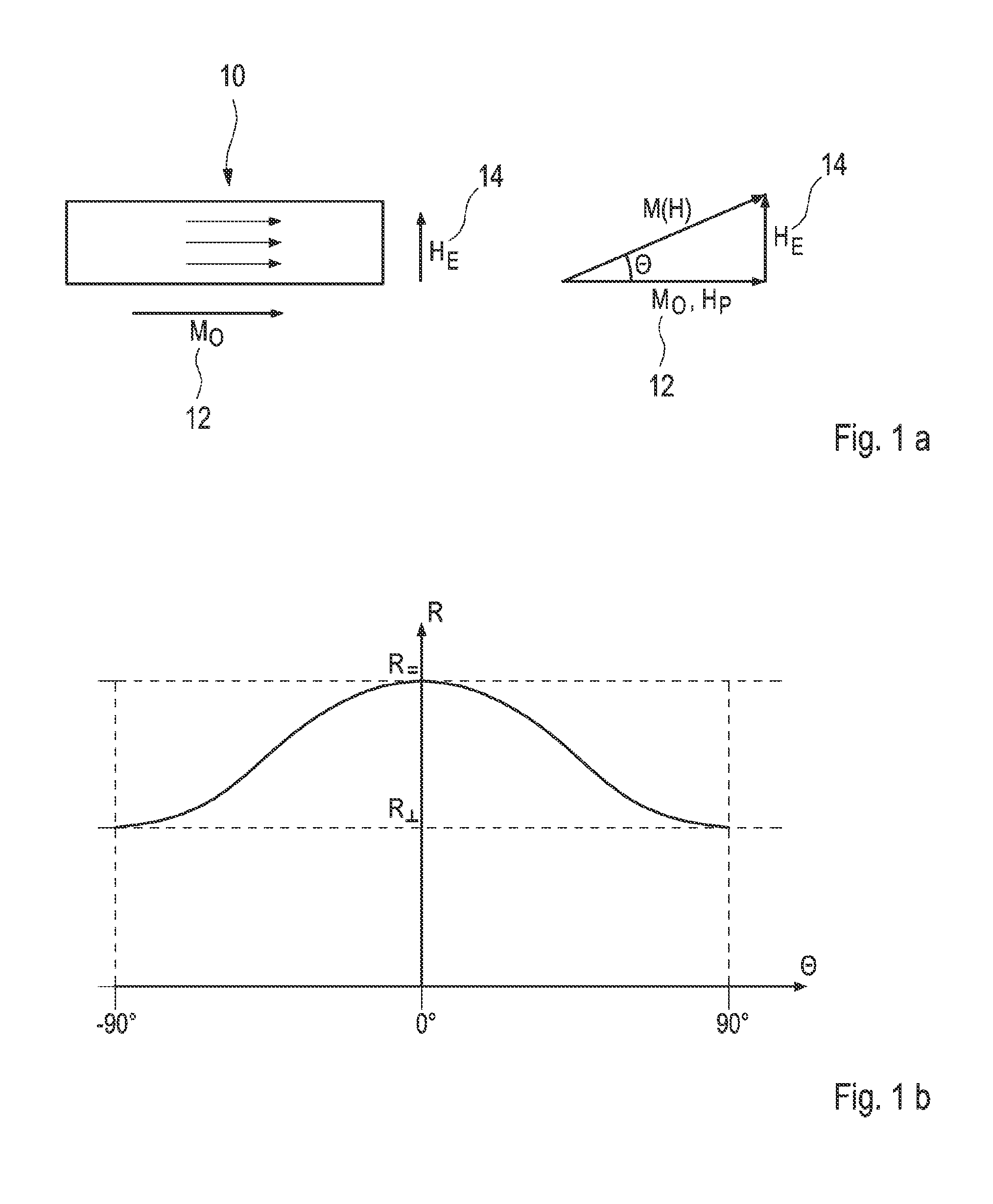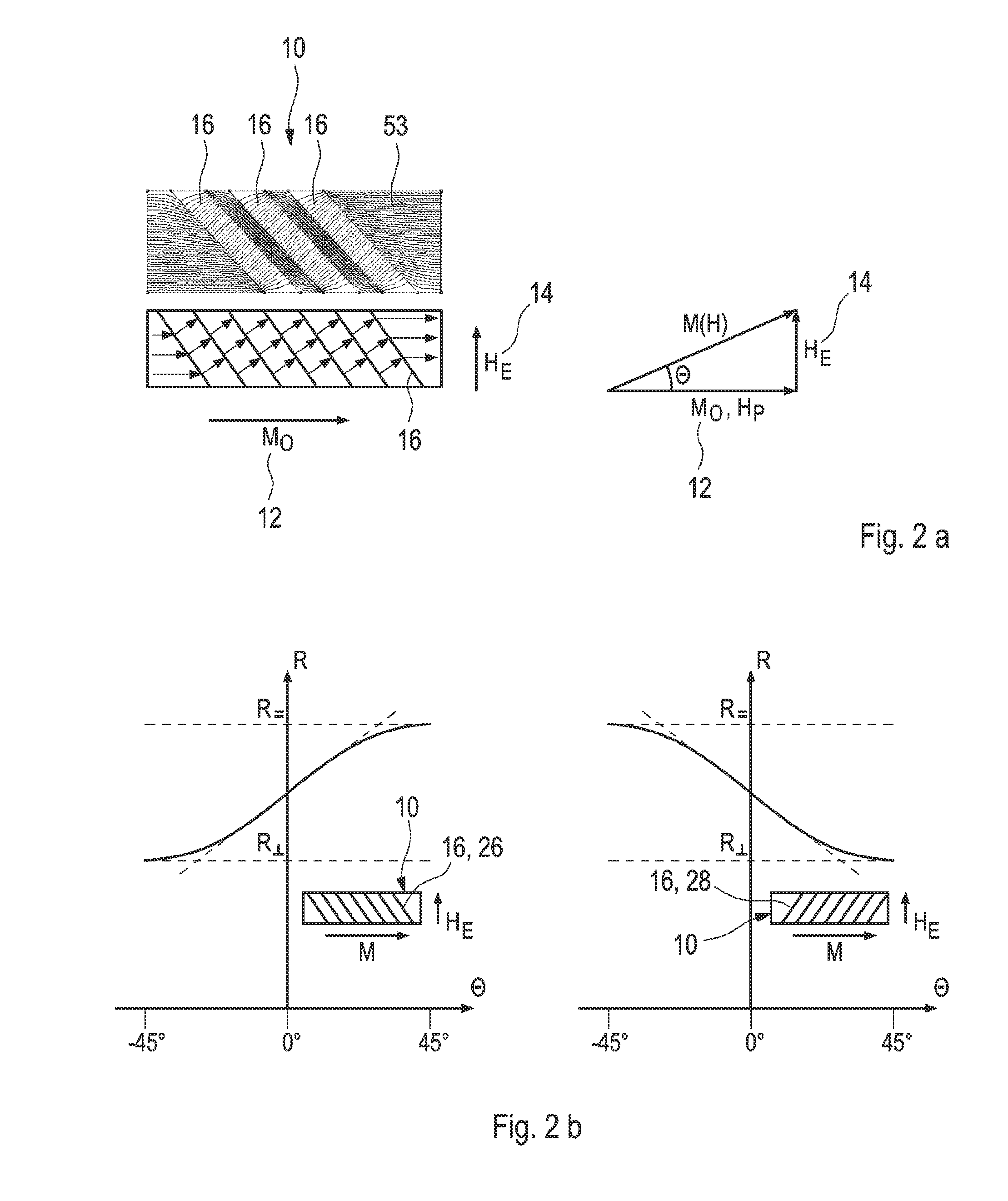Magnetic field sensing device
a magnetic field and sensing device technology, applied in the direction of measurement devices, magnetic field magnitude/direction, instruments, etc., can solve the problems of significant amount of electric energy, low capacity of accumulaters, comparatively high electric energy consumption, etc., to reduce manufacturing complexity, high current, and large magnetic field
- Summary
- Abstract
- Description
- Claims
- Application Information
AI Technical Summary
Benefits of technology
Problems solved by technology
Method used
Image
Examples
first embodiment
[0056]FIG. 6 shows a magnetic field sensing device 50 according to the invention. The magnetic field sensor chip 50 comprises a Wheatstone bridge 18, wherein each bride resistor 20 comprises two subresistors 22, which are designed as magnetic field sensing elements 10 with alternating Barberpole structures 16, 26, 28. The Wheatstone bridge 18 is arranged on a first layer of the device 50. The Wheatstone bridge 18 is connected to four contacting pads 40 for supplying the Wheatstone bridge 18 with electric energy Vcc, Gnd and for sensing a voltage difference ΔVo from pads Vo as a result of an external magnetic field HE 14. The Wheatstone bridge 18 is arranged on top of a flip conductor layer 38, which comprises two sublayers 38-1 and 38-2.
[0057]A detailed drawing of the individual sublayers is depicted in FIG. 7a to FIG. 7c. A flip conductor 30 is arranged on a flip conductor layer 30 and can be contacted by contacting pads 40, for feeding a flipping current pulse IF into the conducto...
second embodiment
[0059]FIG. 8 displays a magnetic field sensing device 50 with an interdigital arrangement 24 of bridge resistors 20. The flip conductor arrangement 30 is similar to the flip conductor of the embodiment depicted in FIGS. 6, 7. The Wheatstone bridge 18 comprises four resistors 20, whereby each resistor 20 comprises a plurality of magnetic field sensing elements 10 in the form of subresistors 22. The magnetic field sensing elements 10 of each resistor 20 are series-connected, whereby two sensing elements 10 with alternating Barberpole structures 26, 28 are arranged on magnetically active conductor stripes 32 of the first sublayer 38-1 of the flip conductor 30 generating opposing magnetic flipping fields Hflip. The series-connected elements 10 of each resistor 20 are arranged in a meandering form, such that interdigitating fingers are formed. The fingers of two resistors 20 interact such that the bridge resistors 20 are formed in an interdigital arrangement 24, wherein magnetic elements...
PUM
 Login to View More
Login to View More Abstract
Description
Claims
Application Information
 Login to View More
Login to View More - R&D
- Intellectual Property
- Life Sciences
- Materials
- Tech Scout
- Unparalleled Data Quality
- Higher Quality Content
- 60% Fewer Hallucinations
Browse by: Latest US Patents, China's latest patents, Technical Efficacy Thesaurus, Application Domain, Technology Topic, Popular Technical Reports.
© 2025 PatSnap. All rights reserved.Legal|Privacy policy|Modern Slavery Act Transparency Statement|Sitemap|About US| Contact US: help@patsnap.com



